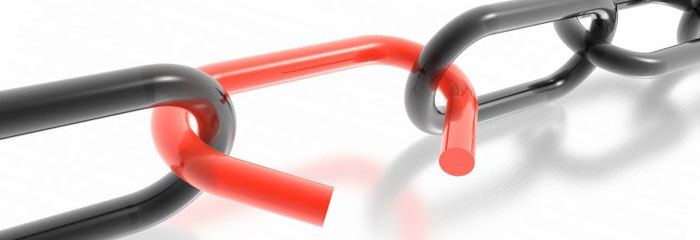If the Penguin update from Google introduced earlier in 2012 proved anything for a fact, it was: the search giant is careful of the backlinks quality, those pointing at any site. It furthermore has the necessary tools for detecting and penalizing low-value ones created just to falsely boost page rankings. Manipulation is not easy…
In the previous post, we have discussed the criteria for determining the link quality, including the site profile (using a language different than that of yours, one for a niche audience or readership, the link hosted on a platform with intrinsic value to its users and not hosted on the ones that are hacked or malware-infected. Other aspect to consider is usage of anchor text, which is keyword-optimized, as we referred to!
Determine which links to remove
Next step is to determine based on your research as which links to remove. Though most of these criteria can create doubt in your mind, a link falling in ‘poor quality’ category need not necessarily be discarded straightaway. If it’s not any longer active or it perhaps has got tagged with proper ‘no-follow’ tags so as to inform the engines to avoid the same, you are not needed to bother about taking out the backlink.
To decide if a link needs to be removed, follow the steps below:
- Click all links individually complied within your exclusive spreadsheet based on research tools of a program selected by you for the purpose.
- If it’s not active any longer and happens to redirect to ‘404 page’, avoid pursuing its removal.
- Provided you are unable to access an active page hosting any of your links, just right click on that page. Visit the source code. And if you notice the tag:
< META NAME = “ROBOTS” CONTENT = “NOINDEX, NOFOLLOW” >
- as contained in the page code’s <head> section, you need not go for its removal.
- The indication is that webmaster here has informed the engine about not scanning the page for links. Also, if you fail to notice this particular code in header, then navigate the source code for finding the link that points at your site. In case <REL=”NOFOLLOW”> tag is found to have been appended specifically to your link, there is no necessity to take it out.
Begin the cleaning-up act
In most other cases barring the above mentioned ones, the links that you are researching are probably active. They are getting counted by an engine. And because such signals might suggest a low- value or manipulative backlink, it is advisable to remove the bad links.
Contact site owners with request for a change The contact details for the site are contained within ‘Contact’ or ‘About’ page. You can search for a free of charge ‘DNS Lookup’ tool. It will let you enter any URL under review so as to locate email ID of the webmaster. Put up a request to delete the link, to change anchor text in order to make it something not overtly keyword-optimized, and to add proper no-follow tags to ensure your links are not any longer active
Not every webmasters will heed to your request. You will secure your position to deal with any impending penalties by listing down the efforts that you made for cleaning up your own backlink profile. This can be done by using reconsideration request methods/procedures of the search engine.
If you alternatively had made use of a link building resource in the past for creating high-volume backlinks, ideally directly contact the service for deleting or changing your links..
